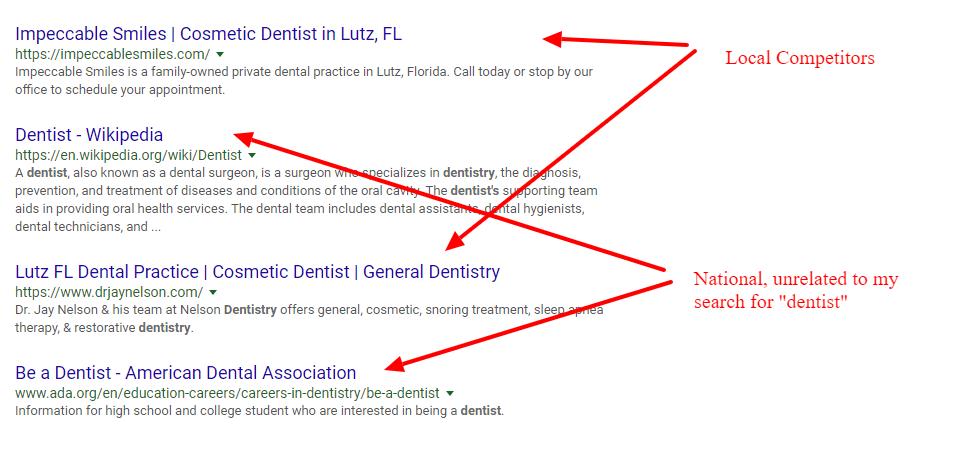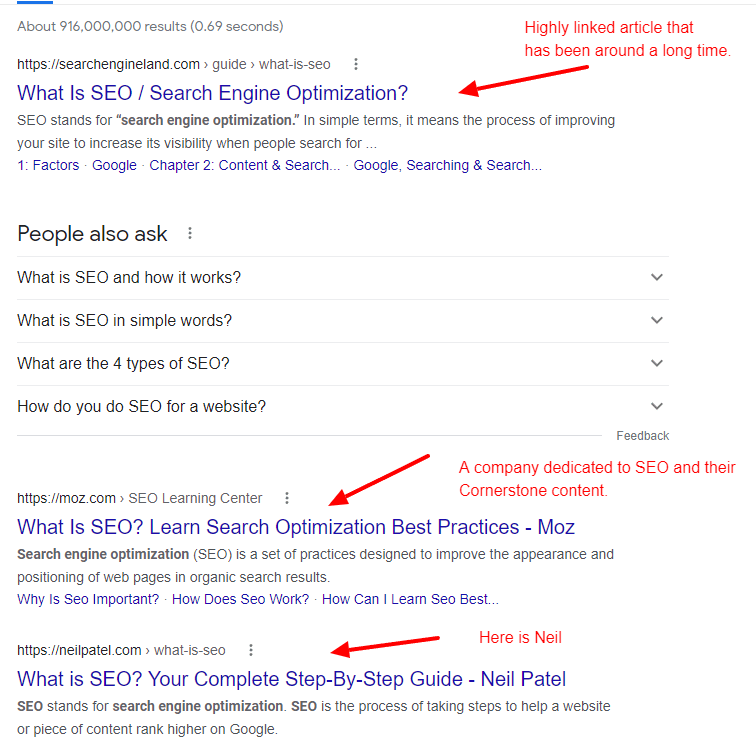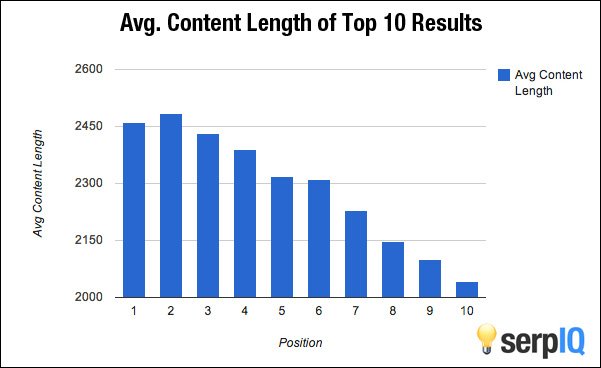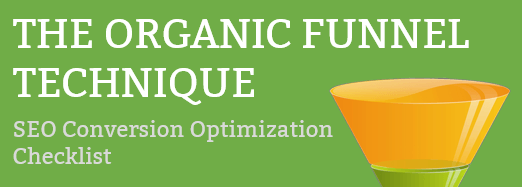
Have you thought about the “why” behind needing to create blog posts and other forms of content? Up until the last decade, businesses never had to worry about creating a blog post, much less ranking for anything.
The vast majority of marketing teams that I work with on SEO have had to rethink what it is they are marketing. Rather than focusing on their product or services, Google has turned you into marketers of content. It has dramatically increased the importance of content for SEO.
Our content has turned into the “product” rather than the product itself. So I have to begrudgingly make this statement: if you want your SEO efforts to succeed, then the content is probably the most important thing you can focus on.
Understanding the “why” that makes content important for search rankings is just as important as the content itself so that you understand what the right content using content analytics.
What Is Content in the Eyes of the Search Engines?
Just to make sure we are all on the same page, we need to define what content is.
Content is anything you publish that is accessible by the search engine. This can be text, pictures, infographics, interactive content, video, audio, PDFs, and meta information.
If a search engine like Google can find it, it is fair game and it all has an impact on just how well you will rank in search engines.
What Google Views as Great Content
There are literally thousands of factors, but since we are talking about content, here is why your content needs to be awesome and what you need to think about if you are going to even try and compete online.
1. What is the user searching for and why?
Google is trying its best to give the person searching what they want. This IS a really hard task when they use generic terms, but Google has found all sorts of ways of understanding user intent. This means you have to figure it out also.
Why is the person using a specific keyword or phrase? Try searching the term yourself and check out the top few results. This will give you a pretty good indication of what Google thinks the user is probably wanting.
Get inside the mind of the person searching for the term. If you are able to answer the reason for the search better than everyone else, Google is going to reward you for it.
2. How Much Competition Exists (Locally and Globally) in Your Space
If you are in a very niche space with very little competition, or you are targeting obscure terms, you will have a much easier time ranking in search results for relevant searches. This is part of the reason why you still see so many SEO vendors out there claiming they can get you in the top 10 of Google search results. But ranking in a crowded field of competitors, especially competitors that know they also have to create great content, it becomes quite a challenge.
A good example of this is a search for “dentist”. Google doesn’t really know what I’m seeking for this, but it is a highly sought-after keyword. These are the top 4 results when I search. 2 are actual dentists, but 2 are national organizations. When you are in a competitive space, you are going to be competing with everyone.
Another good example of this is what we encounter in our own industry of digital marketing. Here at Click, we have created some great cornerstone content, some of which are quite well-shared and still get a fair amount of traffic years after we wrote it.
But we are in such a crowded space (literally over 100 competitors in a 20-mile region), all trying to create great content, that it becomes really, REALLY tough to compete with the bigger competitors that have dedicated staff regularly posting good stuff or even people who don’t compete in our space but compete for viewer attention.
I never promised this would be easy.
3. Content That Generates Great Click-Through Rates
It isn’t just the content on your page that matters. What shows up in Google search results also matters more and more. Google tracks how many people click on your link in their search results, compared to the other search results, to rank it higher or lower. There are two things from your page that Google will display in their search results, the page title, and your meta description. The content inside the title helps Google understand what the page is about. Google ignores the content of the meta description, so you can write whatever you want. This is SUPER important. If you make your title and meta description more compelling to the person doing the search, they are more likely to click on that link. The more that people click on your link, the greater the chances that Rankbrain (Google’s AI) will tend to rank you higher for your targeted content.
Google likes clicks. They are basically votes for your content. The more clicks you get, the higher you can rank. The fewer clicks you get, the lower you will rank. Again, this, unfortunately, favors companies that have deep pockets, not necessarily those that have the greatest product or service.
But if you are smart and willing to put some elbow grease into it, you may be able to gain on your top competitors by simply creating better titles and meta descriptions that grab enough attention that people will click on your link more, which will wear down the ranking of those big competitors over time.
4. Content That Generates Backlinks
The primary rule of content that has almost always existed is, of course, links from other, well-respected websites to your content. Google views these as votes. This has spawned a whole industry of “influencer marketing” that people in social media or large bloggers are actually being paid to write about your product or service for their audience. This strategy of course again helps the companies with deeper pockets that can utilize this strategy. There is still plenty of room for the smaller guy to get links and reviews, but it can be a time-intensive task. There are a wealth of great articles out there on this topic, just search on “content marketing” and you’ll be drinking from the fire hydrant.
I’ll take another example from the SEO industry. Neil Patel is an extremely well-known, worldwide speaker. He is well-known in the SEO space and has started companies in this industry. Every SEO person in our industry links to his content, but he still doesn’t rank first for the term “SEO”. At the moment of this writing, an article of his ranks 3rd. That is still super impressive for the most difficult word to rank on in Google. His content is super link-worthy, but so are the top 3 results in this space.
The point is, that you have to create great content that is link-worthy to rank well for most things people search on that are non-branded.
5. Content That Generates Sharing
This goes along with the content that generates links. If people love your content, they will most likely share your content their social channels such as Facebook, Twitter, Instagram, and the rest. Google monitors this sharing and it has become part of its algorithm. This is where the influencers come in again. If you can get your teams, your customers, and influencers in your space to share with their audience, it all helps your content rank better than the competitors.
6. Content that Converts
This tactic is debatable but highly probable. The vast majority of companies use Google Analytics to track the activity on their websites. Many are also tracking goal conversions within Google Analytics. Google knows what is going on. They send traffic to you through Google Adwords based on who is converting the most. If you think they aren’t also tracking content performance that drives conversions you’d probably lose that bet.
Regardless of whether this is accurate or not, internally, you should always be thinking about creating content that converts. There is a huge amount of psychology that goes into creating content that will convert the most people into customers or take an action. Your content should be aimed at convincing people your product, service or local business is the best thing since sliced bread because you have proven to them you know your stuff or can solve their problem using your content.
7. Your Content’s Length
I won’t dig too deep into this other than to quote some other research that has been done. But basically content around 2,000 words and up should be your target when creating blog entries and similar types of content.
8. Related Content That Lifts the Site (Using old content to support new content)
Of course, you shouldn’t just create any content that attracts an audience. Those tactics (clickbait) have been recognized by Google and are largely ignored or even penalized when overused. So create content in your industry that is, of course, related to your business or non-profit that either create value or is entertaining for your audience. Creating good content will lift the entire site higher for similar keywords.
For instance, let us say you have created a bunch of mediocre content in the past but you are reading articles like this to help you know what to do. So you begin writing on your important topics and create some really great stuff. You begin linking to some of those older articles as supporting material. Google will begin to raise your entire site rankings for your targeted keywords because it recognizes the new content and how the old content is linked together. You get a nice boost using the old and new content together to have a greater effect on search rankings.
Conclusion
Creating content is not easy for most of us. It takes time to create quality, useful and entertaining material. Remember that this is content designed for Google. You should create content for multiple audiences to succeed in driving great traffic to your site.
If you follow this outline, and make sure it’s designed to convert and market it to the influencers in your space, you will have a much greater chance to rank your business higher and get more of that quality traffic we all crave!




